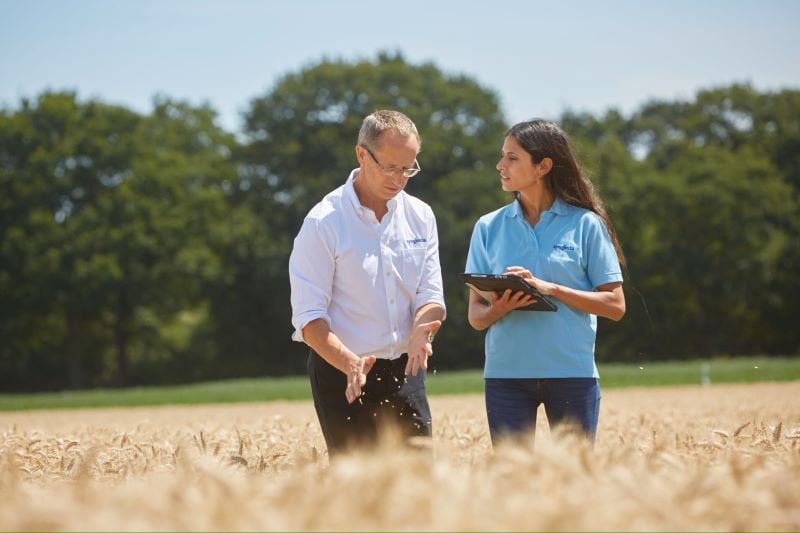The report, as articulated by sustainability director Bonnie Dobchuk, lays down a robust foundation for the company’s commitment to both profitability and sustainability within the agricultural sector and acknowledges the pivotal role of farmers in steering environmental stewardship through nature-based solutions.
Regarding greenhouse gas (GHG) emissions, Croptimistic provides a comprehensive overview of its emissions inventory, with plans for future assessments and reduction strategies. In adhering to the GHG Protocol Corporate Standard, the company shows a commitment to transparency and accountability. Furthermore, its delineation of emissions sources and the establishment of a baseline year for Scope 1 and Scope 2 emissions demonstrate a structured approach to emissions management.
Sustainability and social responsibility
One notable aspect of the report is the company’s comprehensive approach towards assessing impact, which extends beyond merely evaluating its environmental footprint to encompass social and community dimensions. By contextualising their initiatives within the framework of the United Nations Sustainable Development Goals (UN SDGs), Croptimistic demonstrates a holistic understanding of sustainability, encompassing agriculture optimisation and community development.
To this end, the report outlines Croptimistic's commitment to environmental goals, particularly in alignment with the UN SDGs 12, 13 and 15. At the same time, its initiatives to measure water use and waste generation represent a proactive approach to environmental sustainability beyond GHG emissions.
In terms of corporate social responsibility, the report briefly mentions community impact initiatives and employee engagement efforts.
It cogently articulates the company's ethos, which is anchored in empowering modern farms with technological innovations while simultaneously fostering sustainability. The emphasis on enabling farmers to be active participants in steering towards a sustainable future is commendable and aligns well with contemporary sustainability discourse.
Furthermore, the report outlines a range of initiatives aimed at enhancing employee well-being, community engagement and operational efficiency. These initiatives — which include health and safety protocols, diversity and inclusion training and waste management strategies — underscore Croptimistic's commitment to fostering a sustainable corporate culture.
Detailing different dimensions
Croptimistic's sustainability reporting reflects a comprehensive approach towards addressing environmental and social impacts, as evident from their alignment with key UN SDGs. The critique below assesses their reporting based on various dimensions:
- Stakeholder engagement and materiality: Croptimistic demonstrates a structured approach to stakeholder engagement, utilising surveys to gauge the significance of impacts. However, while the organisation prioritises owners and employees in its surveys, it has a noted intention to broaden its stakeholder base in the future, which could enhance the comprehensiveness of its assessments.
- Impact prioritisation and planning: The company’s prioritisation of impacts for reporting demonstrates a clear focus on addressing material sustainability issues. By outlining a specific plan for addressing these impacts, Croptimistic shows a commitment to proactive sustainability management.
- Focus areas and impact strategy: Croptimistic's focus areas, particularly in optimising sustainability in agriculture and supporting rural communities, are aligned well with its mission and SDGs. The organisation’s impact strategy also outlines key concepts derived from its mission, vision and values, providing a solid framework for its sustainability efforts.
- Product and service offerings: Croptimistic’s description of its integrated, high-resolution, turn-key soil foundation map, called SWAT (soil, water and topography) MAPS, along with its SWAT ECOSYSTEM, showcases innovative solutions aimed at improving agricultural sustainability. The organisation’s commitment to providing data-driven insights and tools to farmers is consistent with its mission of empowering modern food production.
- Sustainability reporting and certification: Croptimistic's SWAT CERTIFIED programme and sustainability reports demonstrate a commitment to transparency and accountability. By providing farmers with verified sustainability certifications and reports, it facilitates the adoption of sustainable practices in agriculture, contributing to SDGs related to zero hunger and life on land.
- Community impact: Croptimistic's initiatives towards community impact, including volunteer hours and corporate donations, reflect a holistic approach towards social responsibility. By integrating community support into its core values, the organisation demonstrates a commitment to creating positive social change.
- Research and development (R&D) partnerships: Croptimistic’s collaboration with various research institutions underscores the organisation’s dedication to advancing agricultural technology and sustainability. By investing in research projects, it contributes to the development of innovative solutions for addressing environmental challenges in agriculture.
One significant strength of Croptimistic's reporting is its alignment with international sustainability frameworks, particularly the UN SDGs. By focusing on SDGs 12, 13 and 15, Croptimistic demonstrates a clear understanding of the interconnectedness between environmental responsibility and agricultural sustainability. This alignment provides a robust foundation for its sustainability initiatives and goals.
Additionally, Croptimistic's approach to GHG emissions management is thorough and transparent. By adhering to the GHG Protocol Corporate Standard and providing detailed information on emission sources and calculation methodologies, the company ensures credibility and accountability in its reporting. Moreover, its commitment to conducting GHG inventories for all scopes of emissions highlights a proactive approach to understanding and mitigating its environmental impact.
Croptimistic's dedication to community impact and employee engagement is commendable, as evidenced by its investment in rural communities and initiatives to enhance employee involvement. By fostering a culture of sustainability within its workforce and prioritizing community well-being, Croptimistic not only strengthens its social licence to operate but also contributes to the broader goal of sustainable development.
Areas for improvement
While report acknowledges the importance of water and waste management, the discussion on these topics remains relatively brief. Providing more detailed information on water and waste management initiatives, including specific targets and progress measurements, would demonstrate a more comprehensive approach to environmental sustainability.
Furhermore, while Croptimistic's emphasis on bio-security and limited waste generation is understandable given its business model, there is potential to expand on efforts to reduce water consumption and enhance waste reduction strategies.
The report could also benefit from greater clarity and specificity in certain areas. While it mentions partnerships with universities and research organisations, more information on the nature and outcomes of these collaborations would enhance the credibility of Croptimistic's research initiatives.
Similarly, while the report references innovative technologies developed by the company, more details on their environmental and social impacts would provide stakeholders with a clearer understanding of their significance.
The report also lacks explicit targets for emissions reduction, making it challenging to evaluate the effectiveness of Croptimistic's mitigation strategies. While it shows the company’s emphasis on responsible consumption and production, climate action and preserving life on land, it lacks specific details on how the company is actively contributing to these goals beyond reducing GHGs. Moreover, while Croptimistic acknowledges its Scope 3 emissions and expresses intentions to calculate them in the future, there is no mention of specific plans or methodologies for this assessment.
Including Scope 3 emissions is crucial for a comprehensive understanding of the company's environmental impact, especially considering its position within a complex value chain. As such, report could provide more detailed insights into these areas, including quantifiable data on water consumption and waste generation, as well as strategies for reduction and management.
Suggestions for the future
Finally, while the report highlights technological innovations developed by Croptimistic, such as the SWAT CAM and SWAT BOX, it would be beneficial to provide more information on how these innovations contribute to sustainability goals beyond reducing manpower and vehicle use. Specifically, how do these technologies enhance environmental stewardship or support sustainable agriculture practices?
In summary, Croptimistic's sustainability reporting demonstrates a commitment to environmental stewardship, social responsibility, addressing material impacts, fostering innovation and contributing to the achievement of SDGs. However, to enhance the transparency and credibility of its sustainability efforts, the company could provide more specific targets and actions for emissions reduction.
Additionally, it could expand its reporting to include Scope 3 emissions, and offer deeper insights into water and waste management initiatives, community impact efforts and the environmental benefits of its technological innovations.




